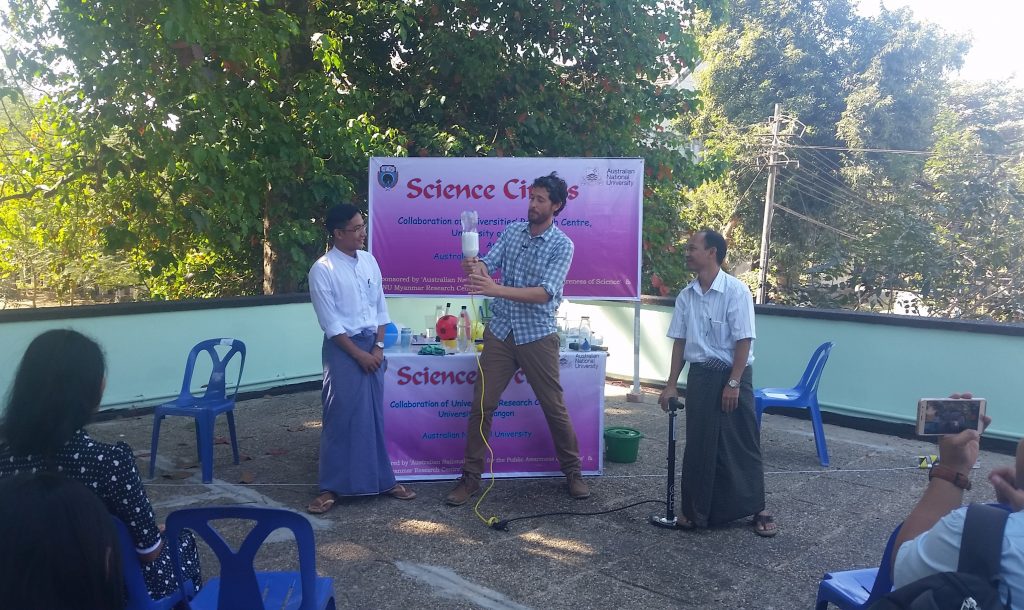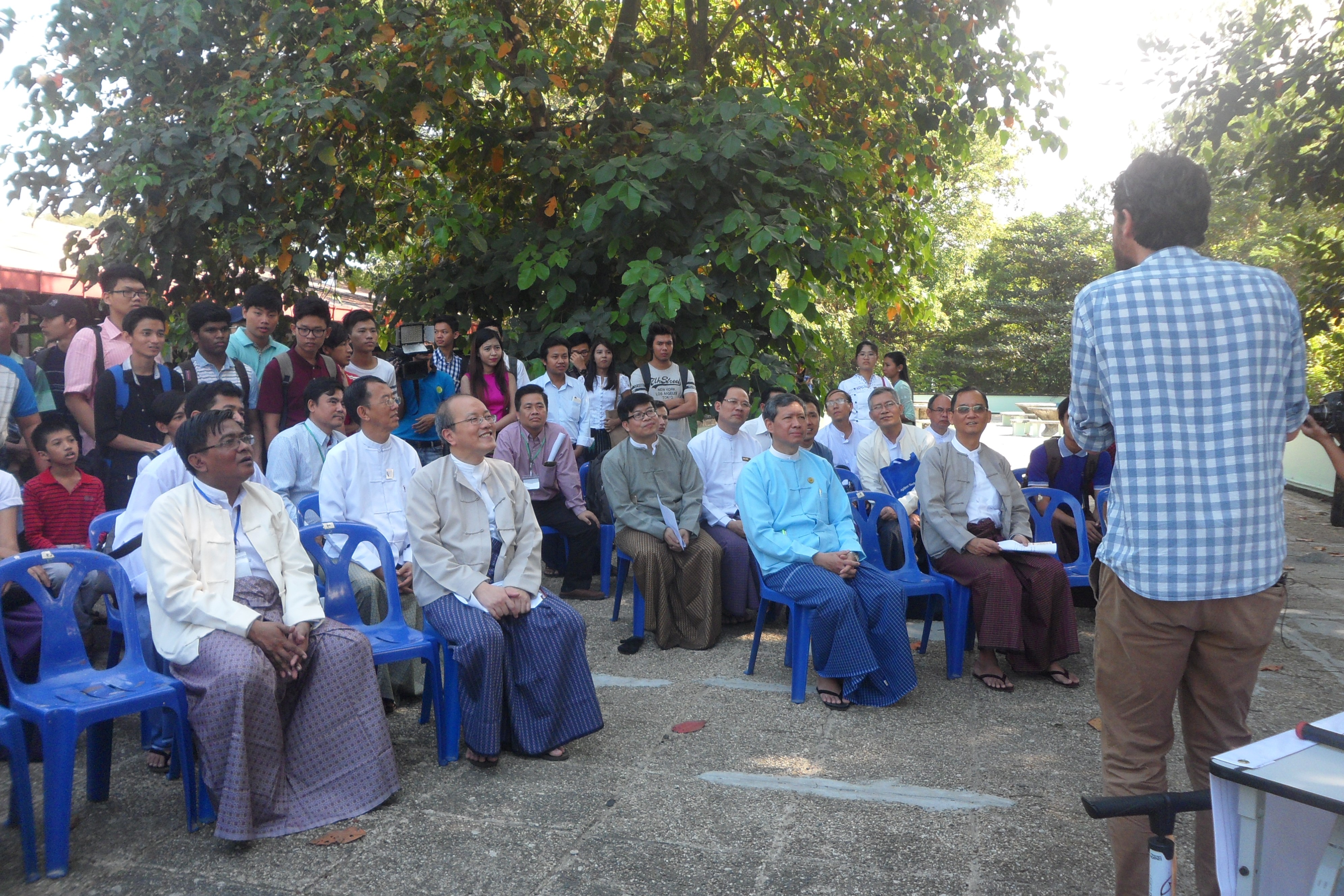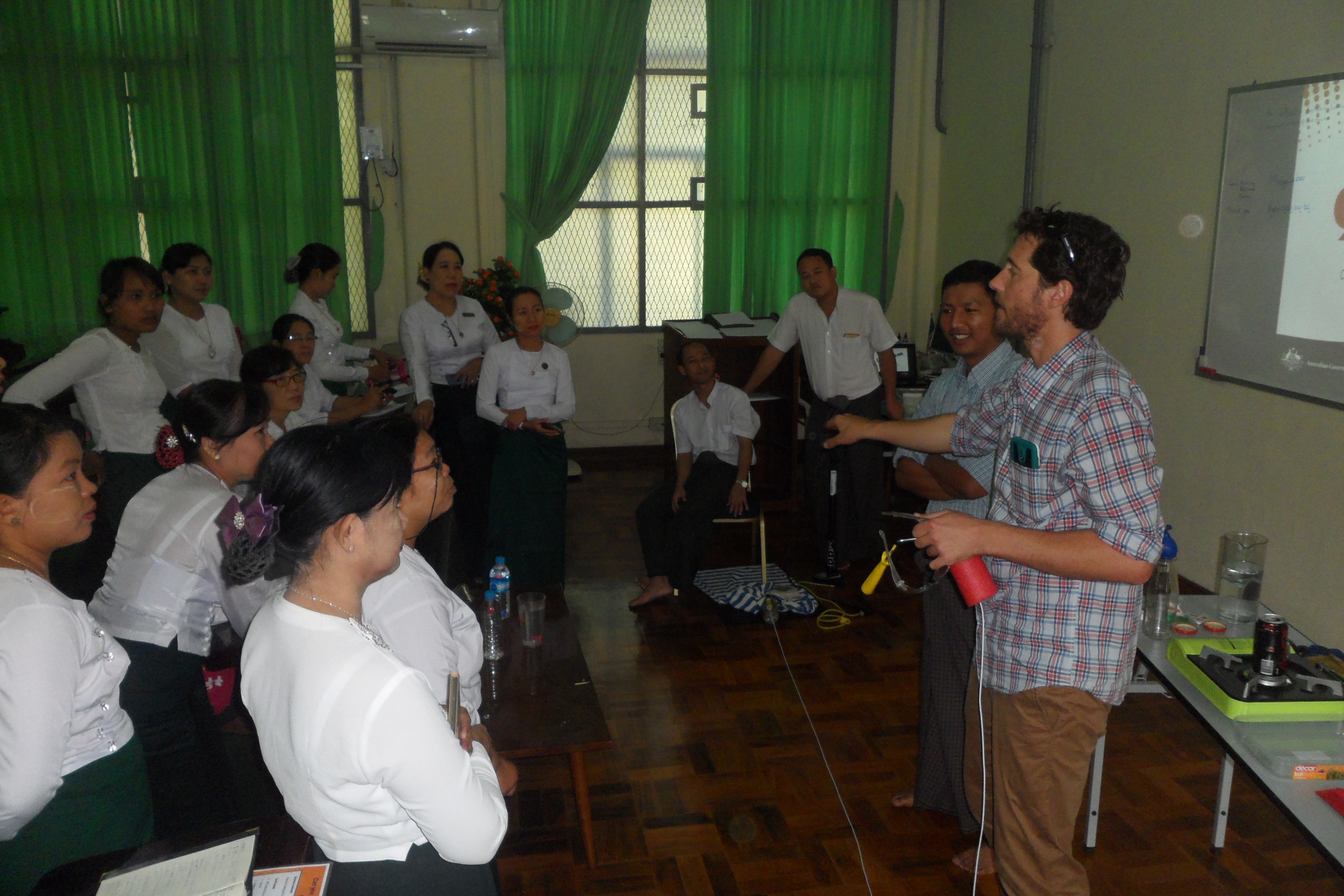Using cheap, everyday household items could inspire Myanmar’s next generation of scientists. Graham Walker outlines how.
Science education the world over faces a distinct challenge: despite being rooted in a discipline founded on curiosity, exploration and practical experimentation, too often science teaching relies on textbooks, dull lectures and rote learning. It’s a challenge for both developed and developing countries throughout the Asia-Pacific, including in Myanmar. But, recent interventions showing positive results in southern Africa may provide pathways for the Asia-Pacific.
Rather than the ‘chalk and talk’ that dominates many science classrooms, instead imagine students actually experiencing science using cheap everyday items: rockets made from kitchen chemicals like vinegar and baking soda, huge fireballs fuelled by nothing but cornflour, or basketballs and eggs showing the fundamental physics of motion and energy. It sounds like fun and it is; and that’s why it’s such a powerful way to engage students in learning science.
Since 2013, the Australian National University’s Science Circus Africa project has been spreading these approaches to teaching science, technology, engineering and maths—or STEM for short—throughout southern Africa. The Science Circus model starts with a partnership between the Australian team and African NGOs, universities or government bodies passionate about STEM. The combined team then delivers exciting science shows, teacher workshops and exhibitions, combining program delivery with on-the-job training.
The results have been promising—68,000 students, teachers and community members have inspired through the program and more importantly 360 African staff have been trained. These trainees are now running their own independent programs and they’re well on their way to reaching over 100,000 people.
With STEM being cited as critical for economic growth and development, the Asia-Pacific is ripe for similar programs. The Australian National University’s National Centre for the Public Awareness of Science (CPAS) has shortlisted six potential partnerships in Southeast Asia and the Pacific and recently took the first dip into the region with a trip to Myanmar. Working in partnership with the University of Yangon and the ANU Myanmar Research Centre, CPAS’s Ben Villani packed a suitcase with simple items that bring science to life. As with most countries the Science Circus visits, the approach was revolutionary and met with surprise and enjoyment in Myanmar.
‘Teachers there very much rely on traditional teaching methods – books, blackboards and memorising’, says Villani, ‘so the Science Circus approach was hugely novel. You see this wonderful little epiphany when teachers realise, for example, that a thoroughly engaging way to show things like Newton’s Laws is to have students turn bike pumps and soft drink bottles into a water rocket experiment’. The approach can be fun as well as make the theory relevant and strengthen the significance of equations on a blackboard.
Part of the philosophy that underpins the Science Circus is the use of cheap, everyday items. For countries like Myanmar (and many schools in Australia for that matter) school funding remains a major challenge with teachers believing that hands-on science is out of reach without fancy labs and expensive equipment. The Science Circus aims to dispel that myth through practical workshops for teachers using inexpensive or free items like straws, paper, soft drink bottles, and old CDs.
There are also sound theoretical reasons for using everyday items. Students can better relate to the science and see how it fits into their everyday lives, which has greater effects on learning than many standard pedagogical interventions. They can also try the science at home and share it with friends. The availability of the everyday equipment makes the science itself more accessible, while the experiential learning motivates and engages students. In essence, the workshops show teachers that a Yangon supermarket is all teachers need to stock their ‘lab’. However, changing a career of teaching practice is not always so simple.
‘Teachers were interested in the approach and eager to see more examples of fascinating demonstrations using simple everyday items, but weren’t always so willing to try it out with their own hands. You have teachers that have been using blackboards and rote learning for their whole careers, so the idea of students doing science using common stuff from a supermarket is a paradigm shift’, says Villani.
‘That said, once they get into it and start having fun they open up and I think that’s when they see the potential for it in the classroom’.
While schoolteachers took a little while to come around to the different methods, trainees from the University of Yangon were extremely hands-on. The Science Circus’s true impact comes from capacity building of local organisations that are trained and equipped to continue running programs. This process starts with local staff translating during science shows and workshops, then evolves into co-presenting alongside Australian staff, and finally doing their own solo programs. Despite being only a short scoping visit, University of Yangon staff made excellent progress.
‘By the end of the visit the local staff—who were initially there for logistics and translation—were an active part of the show, helping me with equipment and presenting some of the experiments themselves. Seeing it go full circle—from training them to them presenting to the kids—is a huge moment’, Villani says.
ANU and University of Yangon are mapping out the next steps, so stay tuned for a full Science Circus tour coming to Myanmar soon.
……………
Dr Graham Walker is based at the ANU National Centre for the Public Awareness of Science and Manager of the Science Circus Africa project.
 Facebook
Facebook  Twitter
Twitter  Soundcloud
Soundcloud  Youtube
Youtube  Rss
Rss 


